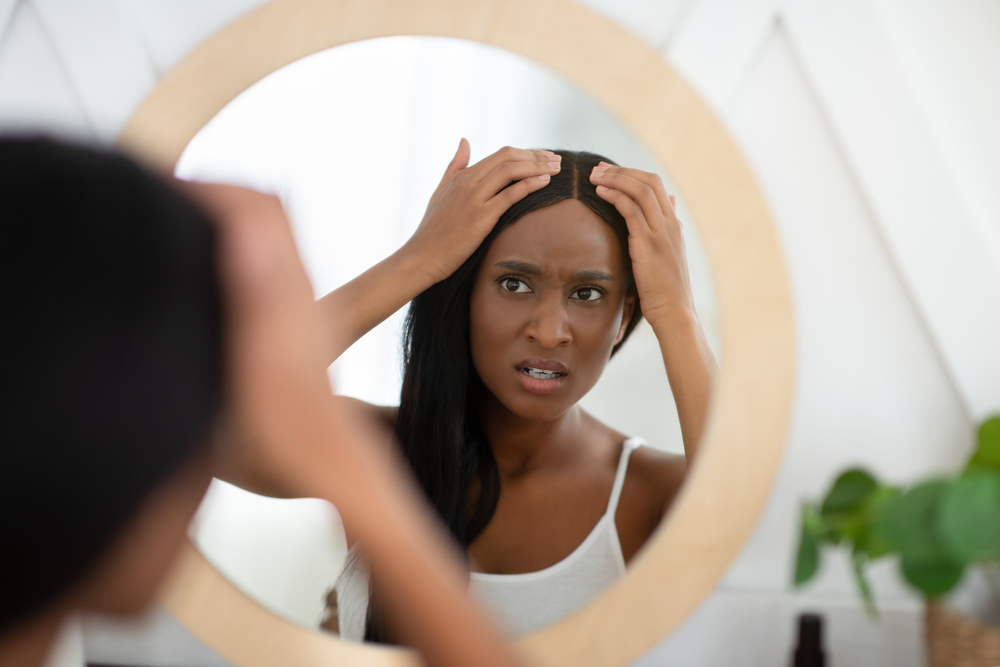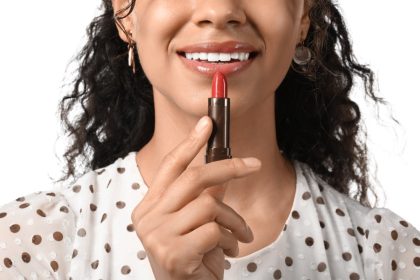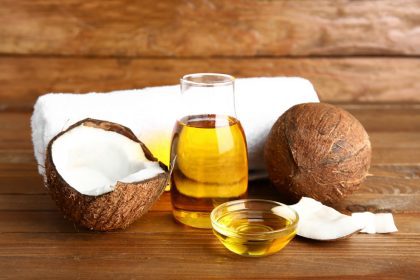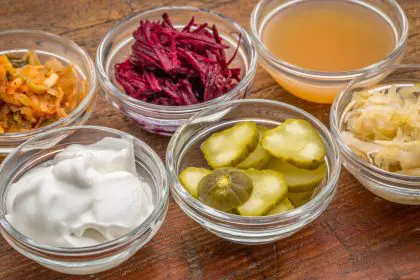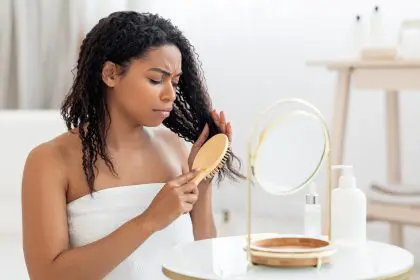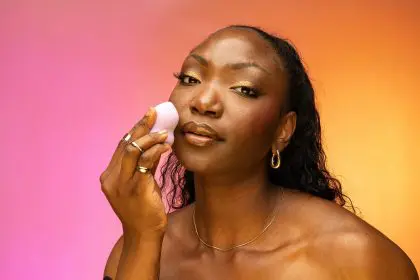Your hair looked perfect when you left the house this morning, but by lunchtime it’s already looking like you dunked your head in a fryer. Sound familiar? You’re not alone in the battle against oily scalp syndrome, and you’re definitely not imagining that your hair seems to get greasier faster than everyone else’s.
The truth is that scalp oil production is like a thermostat that’s gotten completely out of whack. Your sebaceous glands are working overtime, pumping out more oil than your hair could ever need, leaving you with roots that look unwashed even hours after shampooing.
But here’s the thing that might surprise you: most of the products marketed for oily hair actually make the problem worse. Those harsh, oil-stripping shampoos and astringent treatments are sending your scalp into panic mode, causing it to produce even more oil to compensate for what’s being stripped away. It’s like your scalp is stuck in a vicious cycle of overproduction.
Clay masks aren’t just for your face anymore
Bentonite clay and French green clay have been quietly revolutionizing scalp care, and they’re about to become your new best friends in the fight against excess oil. These natural clays work like tiny magnets, pulling excess oil, dead skin cells, and product buildup right out of your scalp without over-drying.
The magic happens at the molecular level. Clay particles carry a negative electrical charge that attracts positively charged toxins and excess oils. When you apply a clay mask to your scalp, it literally draws out impurities while leaving your natural moisture balance intact.
Mix two tablespoons of bentonite clay with enough water to create a smooth paste. Apply it directly to your scalp, focusing on the oiliest areas around your hairline and crown. Leave it on for 15-20 minutes until it feels tight but not uncomfortable, then rinse thoroughly with lukewarm water.
The key is using clay treatments consistently but not too frequently. Once or twice a week is perfect for most people with oily scalps. Overuse can actually stimulate more oil production, so patience and moderation are essential for seeing long-term improvements.
You can enhance your clay mask by adding a few drops of tea tree oil or apple cider vinegar, both of which have additional oil-balancing properties. Just remember that a little goes a long way with these potent additions.
Apple cider vinegar resets your scalp’s pH balance
Your scalp’s natural pH should be slightly acidic, around 4.5 to 5.5, but most shampoos and styling products are alkaline, which disrupts this delicate balance and triggers excess oil production. Apple cider vinegar acts like a reset button for your scalp’s pH, bringing it back to its optimal acidic state.
When your scalp’s pH is balanced, your sebaceous glands don’t have to work as hard to maintain healthy conditions. The acidic environment also helps close your hair cuticles, making your hair look shinier and feel smoother while reducing the appearance of greasiness.
Create a simple rinse by mixing one part raw, unfiltered apple cider vinegar with three parts water. After shampooing, pour this mixture over your scalp and hair, massage gently, and let it sit for 2-3 minutes before rinsing with cool water. The vinegar smell will disappear once your hair dries.
Start with this treatment once a week and gradually increase to 2-3 times per week if your scalp responds well. Some people with very oily scalps can eventually use diluted apple cider vinegar rinses daily without any problems.
The type of apple cider vinegar matters for scalp health. Look for raw, unfiltered versions that contain the “mother,” which provides additional beneficial enzymes and probiotics that support scalp health. Clear, processed vinegar won’t provide the same benefits.
Scalp massage rewires your oil production patterns
This might sound counterintuitive, but regular scalp massage can actually help reduce oil production over time by improving circulation and helping your sebaceous glands function more efficiently. When blood flow to your scalp is poor, your oil glands can become sluggish and produce oil irregularly.
Proper scalp massage stimulates lymphatic drainage, which helps remove toxins and excess hormones that can trigger overactive oil production. It also helps distribute natural oils more evenly throughout your hair, reducing the concentrated greasiness at your roots.
Use your fingertips, not your nails, to massage your scalp in small circular motions for 5-10 minutes before washing your hair. Start at your hairline and work your way back, applying gentle but firm pressure. You should feel your scalp moving under your fingers, not just your fingers sliding over your hair.
Adding a few drops of essential oils like peppermint, rosemary, or tea tree to a carrier oil like jojoba or grapeseed can enhance the benefits of scalp massage. These oils have natural astringent properties that help balance oil production while the massage improves circulation.
The timing of your scalp massage matters too. Massaging right before shampooing helps loosen buildup and makes your cleansing more effective. Some people also benefit from brief scalp massages on non-wash days to maintain circulation without stimulating excess oil production.
Strategic hair washing breaks the overproduction cycle
The biggest mistake people with oily scalps make is washing their hair too frequently with harsh products. This strips away all natural oils, sending your sebaceous glands into overdrive to replace what’s been removed. You end up in a cycle where you need to wash daily because your scalp is producing more oil to compensate for the constant stripping.
Breaking this cycle requires patience and a strategic approach to hair washing. Start by extending the time between washes by just one day. Yes, your hair might look a little greasier than usual, but this temporary discomfort is necessary for retraining your scalp.
Use a gentle, sulfate-free shampoo that cleanses without completely stripping your scalp’s natural oils. Focus the shampoo only on your scalp and roots, letting the suds rinse through the length of your hair rather than scrubbing your entire head with shampoo.
Dry shampoo becomes your best friend during the transition period, but use it strategically rather than as a daily crutch. Apply dry shampoo to clean, dry hair the night before you plan to skip washing. This gives it time to absorb oils overnight rather than trying to soak up a day’s worth of grease.
Water temperature matters more than you might think. Hot water stimulates oil production and can actually make your scalp produce more sebum. Wash with lukewarm water and finish with a cool rinse to help seal your hair cuticles and reduce the appearance of oiliness.
Dietary changes that calm overactive oil glands
Your scalp oil production is influenced by hormones, inflammation, and nutrient deficiencies, all of which can be affected by what you eat. Certain foods can trigger increased sebum production while others help regulate it naturally.
Refined sugars and processed carbohydrates cause insulin spikes that can stimulate androgen hormones, leading to increased oil production throughout your body, including your scalp. Reducing these foods often leads to noticeable improvements in scalp oiliness within a few weeks.
Omega-3 fatty acids from sources like fish, walnuts, and flaxseeds help reduce inflammation that can trigger overactive sebaceous glands. These healthy fats also support overall skin and scalp health, creating conditions for more balanced oil production.
Zinc deficiency is commonly linked to scalp and skin problems, including excessive oiliness. Foods rich in zinc include pumpkin seeds, oysters, beef, and chickpeas. Many people with persistent scalp issues see improvements when they address underlying zinc deficiency.
B-vitamins, particularly biotin and niacin, play important roles in regulating sebum production. Leafy greens, eggs, and nutritional yeast are excellent sources of B-vitamins that support scalp health from the inside out.
Creating sustainable habits for long-term scalp balance
The key to naturally balancing scalp oil production is consistency rather than intensity. Dramatic treatments and frequent product changes often backfire by disrupting your scalp’s natural equilibrium even further.
Choose one or two methods that feel sustainable for your lifestyle and stick with them for at least 6-8 weeks before evaluating results. Your scalp needs time to adjust to new routines and rebalance its oil production patterns.
Keep a simple hair diary noting when you wash, what products you use, and how your scalp looks and feels each day. This helps you identify patterns and see gradual improvements that might not be obvious day-to-day.
Remember that hormonal changes, stress levels, weather, and even changes in water quality can all affect scalp oil production. Having a toolkit of natural methods gives you options for adjusting your routine based on what your scalp needs at different times.
The goal isn’t to eliminate all oil production, which would leave you with a dry, flaky scalp and brittle hair. Instead, you’re working toward balanced oil production that keeps your scalp healthy without leaving your roots looking greasy hours after washing.

